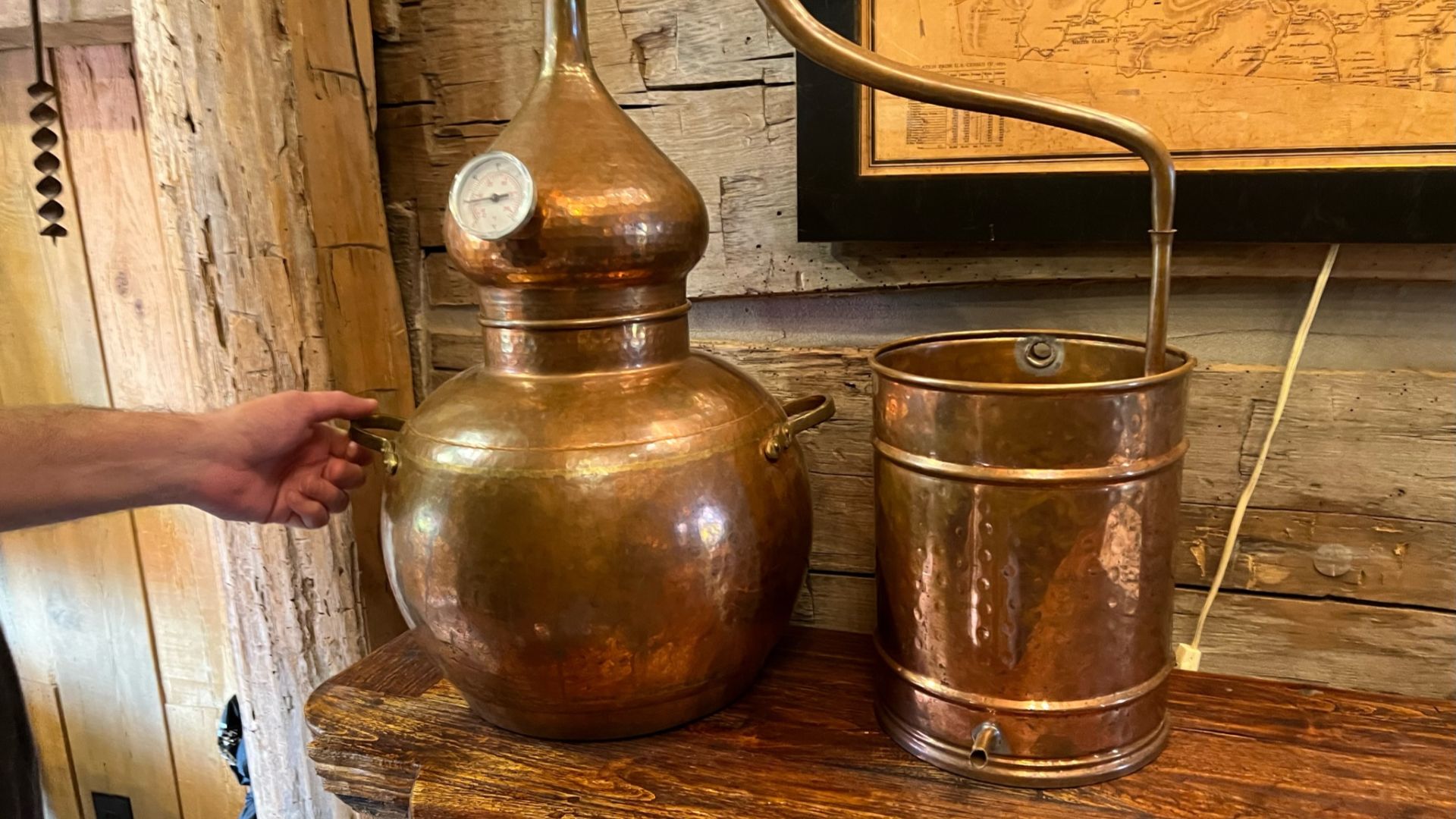The process of distilling alcohol is fascinating to me. I had a chance to tour a couple of whiskey distillers on a trip to Tennessee and the process and art of it amazed me.
On the distillery tours, we learned about the process of distilling, and why each brand has it’s own flavor profile and strength.
The part that stuck with me was that the right ingredients plus the right process equaled high-proof results.
A master distiller knows exactly what ingredients to put in the mix, how much heat to add, what to filter it through, what type of barrel to age it in, and how long to let it sit.
When those things come together, the result is a high-quality product that is highly valued by whiskey drinkers.
This process has application to the stories and brand messages inside your business.
When you combine the right story elements, with the right process, the complex ideas in your business become easy to understand and highly valued by your audience.
Why does this matter?
Because in a crowded and noisy marketplace, it’s not enough to do great work. You have to constantly be repeating your brand message as well…
On your website.
Social media.
Email.
Podcasts.
Keynote addresses.
And more…
Any time you step up to a real, or virtual microphone, you have to be ready to speak with clarity about your business. To share the story of what you do and why in a way that connects with your audience emotionally and relationally.
But for many businesses, telling a clear story is a challenge. You are so close to your product and services, that complexity creeps in. So instead of inspiring people to act, your marketing story overinforms and falls flat. Confused and uncertain, your ideal customer walks away. Hoping to find someone who can solve their problem without the confusion.
Whether you’re a business owner, entrepreneur, or the team member responsible for marketing, the key to success is distilling your message down to it’s essentials. Not dumbing down what you do, but focusing your brand message so it’s easily grasped by your audience.
So how do you do it?
Here is a three-part framework for crafting a compelling narrative around your brand message.
Step One: Story – Identify Your Brand Message
Every successful brand has a list of potential stories to share. Between your products, services, business story, and team, there are lots of things you could talk about. For most businesses, the difficulty isn’t finding something to share, it’s finding the right story for the audience you are standing in front of. Like staring into your closet trying to pick the appropriate outfit for your next event, you have to be able to look at your stories and pick the right one. Taking into account the audience, context, depth of relationships, and formality of the communication.
So whether you’re a new business that is just starting out or an established brand looking to refresh your marketing, identifying the right story to share is the first step.
You can start by asking yourself a few questions:
- Who am I hoping to reach?
- What problem do they have that needs solving?
- What solution do I provide to address the problem?
- What win does my solution give to people?
- What is the next step I want them to take?
Once you have a clear picture of the story you need to share, you can begin to build your messaging around it.
Step Two: Simplicity – Distill Your Brand Message
Your story is too important to be confusing. So your brand message needs to be simple and easy to understand, even if your products or services are complex. Getting to the core message of what your brand message needs to convey takes work. It requires you to put the story details on the table and take an honest look at what information the customer needs at that moment. Then build a brand message that shares only the elements that meet the customer needs and goals.
This is important because potential customers won’t dig through layers of confusing brand messages and poor marketing content. They are too busy and have too many other pressing issues to do the work for you. So unless you are willing to simplify your message into easily understandable pieces, you will continue to have a disconnect with your audience.
Here are a few questions you can ask to simply your brand message:
- Where is my audience in the customer journey?
- What details do they need to have right now to understand my product or service?
- How can I explain those details in a way that they can quickly grasp them without confusion?
- Would someone with no inside knowledge of my product and service be able to understand this explanation?
- Is there a story, visual element, or supporting document I could share that would help them quickly understand the big ideas I’m trying to share?
Step Three: Strategy – Map a Plan for Sharing Your Brand Message
Getting your message seen and heard takes more than just throwing a bunch of content out and hoping something sticks. That might work a few times, but it’s not repeatable, and it definitely isn’t scalable. Sharing your brand message requires an intentional plan to align your marketing efforts with the story you are trying to get out.
That means that a set-it-and-forget-it plan for putting out brand messages isn’t enough. Each story will connect a bit differently, and have audience members at different points in your sales journey. So you’ve got to consider the best ways to get each specific message in front of your ideal audience. Then figure out how to put it there enough times that they recognize it and engage.
Here are some questions to help you map a strategic marketing plan for your brand message:
- Where does my audience spend time regularly?
- What marketing channels are the best options for delivering this story to those locations?
- What types of content work best on those marketing channels?
- What would I need to do to show up consistently on those channels (frequency, volume of content, etc)?
- What is the next step I need to take to share my story intentionally on those channels?
Clarity is the key to standing out in today’s crowded and noisy marketing landscape. By following this three-part framework you can begin to craft compelling brand messages that resonate with your audience and help position you as a leader in your industry.
Remember, it’s not about being the loudest voice in the room, it’s about being the most effective at sharing your story. So take the time to identify your story, simplify your messaging, and create a strategy for sharing your story with the world. Your business, and customers, will thank you for it.
Need Help Distilling Your Story?
There are two ways I can help…
Send me an email with the phrase DISTILL YOUR STORY and we can connect.
Check out my FREE Resource on 3 Steps to a Clear Marketing Story.



